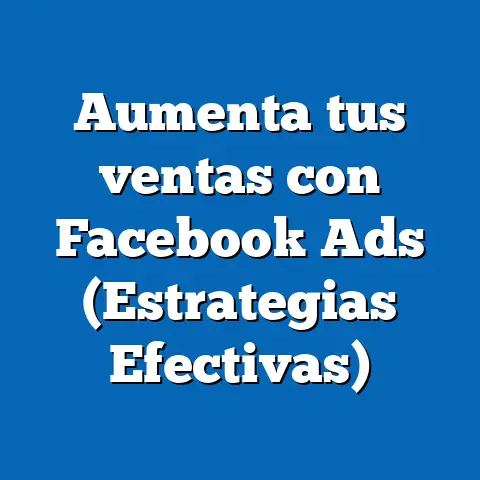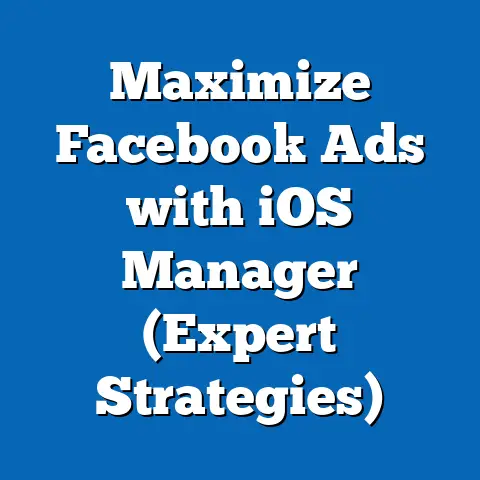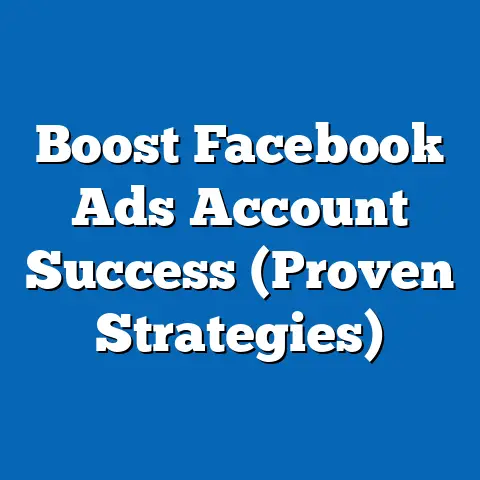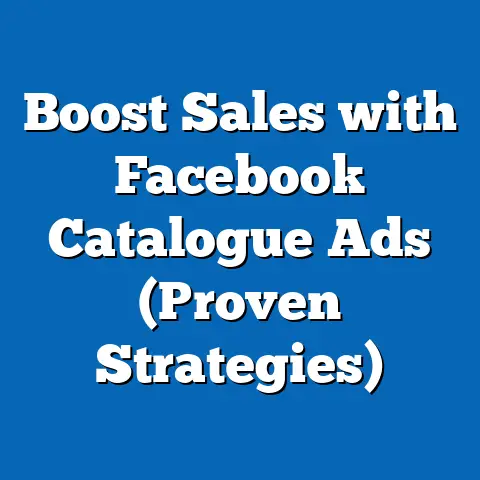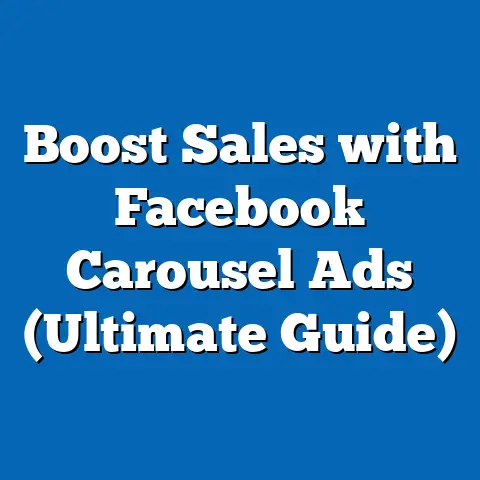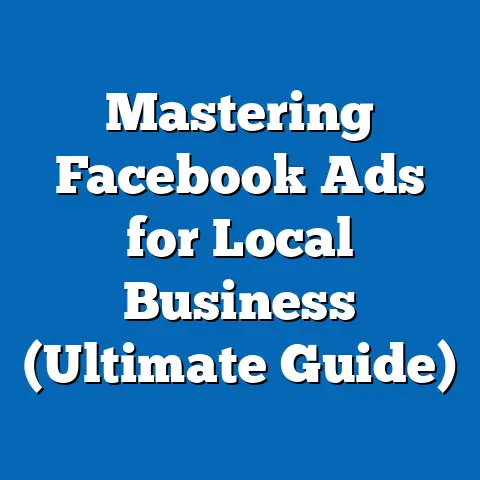Master Facebook Boost Ad Guidelines (Unlock Higher ROI)
Are you tired of pouring your advertising budget into Facebook ads with little to no return on investment? I know the feeling. I’ve been there, staring at underwhelming results, wondering where I went wrong. The truth is, Facebook advertising, especially Boost Ads, can be incredibly powerful, but only if you understand the nuances and best practices. This article is your roadmap to mastering Facebook Boost Ads and unlocking the higher ROI you deserve.
Understanding Facebook Boost Ads
Let’s start with the basics. What exactly are Facebook Boost Ads, and how do they differ from traditional Facebook ads? Think of Boost Ads as the express lane to increased visibility for your existing content. Instead of creating an ad from scratch within the Ads Manager, you’re essentially paying to amplify the reach of a post you’ve already published on your Facebook page.
Boost Ads vs. Traditional Facebook Ads:
- Simplicity: Boost Ads are much simpler to set up. You’re working with existing content, making the process faster and less technical.
- Targeting: While you can target your audience, the options are generally less granular than in the Ads Manager.
- Objectives: Boost Ads typically focus on engagement, reach, and website traffic. Traditional ads offer a wider range of objectives, including conversions, lead generation, and app installs.
- Control: Ads Manager provides significantly more control over ad placement, bidding strategies, and advanced targeting options.
In essence, Boost Ads are a great entry point for businesses new to Facebook advertising or for quickly promoting timely content. They’re perfect for increasing brand awareness, driving traffic to a specific blog post, or getting more eyes on a limited-time offer.
What Can You Boost?
You can boost various types of content, each with its own set of benefits:
- Posts: Boost regular text updates, photos, and videos to increase engagement (likes, comments, shares) and reach a wider audience.
- Events: Promote upcoming events to boost attendance and generate buzz.
- Offers: Highlight special deals and discounts to drive sales and attract new customers.
Takeaway: Boost Ads are a simplified way to amplify your Facebook content. They’re ideal for beginners and for quick promotional pushes, but they offer less control than traditional ads.
Why Boosting is Important for Your Business
In today’s digital landscape, visibility is everything. Facebook, despite the rise of newer platforms, remains a powerhouse with billions of active users. However, organic reach – the number of people who see your posts without paid promotion – has been steadily declining. This is where boosting comes in.
The Visibility Challenge:
Facebook’s algorithm prioritizes content from friends and family, making it increasingly difficult for businesses to reach their target audience organically. Without boosting, your posts might only be seen by a small fraction of your followers.
Boost Ads to the Rescue:
Boost Ads cut through the noise and ensure that your content reaches a larger, more relevant audience. They’re a cost-effective way to increase visibility and drive engagement.
Statistics Speak Volumes:
While exact numbers vary depending on the industry and target audience, studies consistently show that boosted posts significantly outperform organic posts in terms of reach and engagement. I’ve personally seen posts that would have reached only a few hundred people organically reach thousands with a modest boost.
Supporting Your Business Goals:
Boost Ads can be tailored to support a variety of business objectives:
- Brand Awareness: Increase your brand’s visibility and reach new potential customers.
- Lead Generation: Drive traffic to your website or landing page to capture leads.
- Sales: Promote products and services to generate sales and increase revenue.
Takeaway: Boosting is crucial for overcoming the limitations of organic reach and ensuring that your content reaches your target audience. It’s an essential tool for achieving various business goals, from brand awareness to sales.
Setting Up Your Boost Ads for Success
Now, let’s dive into the practical steps of creating a successful Boost Ad. Here’s a step-by-step guide:
- Choose Your Post: Select the post you want to boost from your Facebook page. Consider content that has already performed well organically, as this indicates it resonates with your audience.
- Click the “Boost Post” Button: This button is located at the bottom right of your post.
-
Define Your Target Audience: This is where you tell Facebook who you want to see your ad. You can target based on:
- Location: Specify geographic areas.
- Age: Select an age range.
- Gender: Choose male, female, or all.
- Interests: Target people based on their interests and hobbies.
- Behaviors: Target people based on their online behavior.
- Custom Audiences: Target people who have interacted with your business before (e.g., website visitors, email subscribers).
- Lookalike Audiences: Target people who are similar to your existing customers.
- Set Your Budget: Choose how much you want to spend on your Boost Ad. Facebook will estimate the reach based on your budget.
- Choose Your Duration: Select how long you want your ad to run.
- Select Your Objective: While Boost Ads offer limited objective options compared to the Ads Manager, choose the one that best aligns with your goals (e.g., engagement, website traffic).
- Review and Boost: Double-check your settings and click the “Boost” button.
Define Your Target Audience: This is where you tell Facebook who you want to see your ad. You can target based on:
- Location: Specify geographic areas.
- Age: Select an age range.
- Gender: Choose male, female, or all.
- Interests: Target people based on their interests and hobbies.
- Behaviors: Target people based on their online behavior.
- Custom Audiences: Target people who have interacted with your business before (e.g., website visitors, email subscribers).
- Lookalike Audiences: Target people who are similar to your existing customers.
- Set Your Budget: Choose how much you want to spend on your Boost Ad. Facebook will estimate the reach based on your budget.
- Choose Your Duration: Select how long you want your ad to run.
- Select Your Objective: While Boost Ads offer limited objective options compared to the Ads Manager, choose the one that best aligns with your goals (e.g., engagement, website traffic).
- Review and Boost: Double-check your settings and click the “Boost” button.
Choosing the Right Objective:
The objective you choose for your Boost Ad is critical for maximizing ROI.
- Engagement: If your goal is to increase likes, comments, and shares, choose the “Engagement” objective.
- Website Traffic: If you want to drive traffic to your website, choose the “Get More Website Visitors” objective.
Takeaway: Setting up your Boost Ad correctly is crucial for reaching the right audience and achieving your desired results. Pay close attention to targeting, budget, duration, and objective.
Crafting Compelling Ad Content
Even with perfect targeting, your Boost Ad will fall flat if the content isn’t engaging. Here are some best practices for writing compelling ad copy and creating visually appealing ads:
Ad Copy Best Practices:
- Know Your Audience: Understand their needs, interests, and pain points.
- Write Clear and Concise Copy: Get straight to the point and avoid jargon.
- Highlight Benefits, Not Just Features: Explain how your product or service will improve their lives.
- Use Strong Calls to Action: Tell them exactly what you want them to do (e.g., “Learn More,” “Shop Now,” “Sign Up”).
- Use Emojis Sparingly: Emojis can add personality, but don’t overdo it.
Visuals That Grab Attention:
- Use High-Quality Images and Videos: Blurry or pixelated visuals will turn people off.
- Choose Relevant Visuals: Make sure the visuals are relevant to your ad copy and target audience.
- Use Bright Colors and Eye-Catching Designs: Stand out from the crowd.
- Consider Video Ads: Video ads are highly engaging and can convey a lot of information in a short amount of time.
Successful Boost Ad Examples:
- Local Restaurant: A restaurant could boost a post featuring a mouthwatering photo of their signature dish with copy highlighting a limited-time discount.
- E-commerce Store: An e-commerce store could boost a post showcasing their latest product with copy emphasizing its unique benefits and a clear call to action to “Shop Now.”
- Service Business: A service business could boost a post offering a free consultation with copy highlighting their expertise and a call to action to “Book Your Free Consultation Today.”
Takeaway: Compelling ad content is essential for capturing attention and driving engagement. Focus on writing clear, concise copy, using high-quality visuals, and including strong calls to action.
Targeting Your Audience Effectively
Targeting is arguably the most important aspect of a successful Boost Ad campaign. You need to make sure your ad is reaching the right people – those who are most likely to be interested in your product or service.
Leveraging Facebook’s Targeting Options:
Facebook offers a variety of targeting options to help you find your ideal audience:
- Demographics: Target people based on age, gender, education, and relationship status.
- Interests: Target people based on their interests and hobbies.
- Behaviors: Target people based on their online behavior, such as purchase history and device usage.
- Connections: Target people who are connected to your Facebook page or events.
Creating Custom Audiences:
Custom Audiences allow you to target people who have already interacted with your business. You can create custom audiences based on:
- Website Visitors: Target people who have visited your website.
- Email Subscribers: Target people who are on your email list.
- Facebook Page Engagement: Target people who have liked or followed your Facebook page.
- Offline Activity: Target people who have interacted with your business offline (e.g., made a purchase in your store).
Utilizing Lookalike Audiences:
Lookalike Audiences allow you to target people who are similar to your existing customers. Facebook analyzes the characteristics of your custom audiences and finds new people who share those characteristics.
Takeaway: Effective targeting is crucial for reaching the right audience and maximizing your ROI. Leverage Facebook’s targeting options, create custom audiences, and utilize lookalike audiences to find your ideal customers.
Budgeting and Bidding Strategies
Setting the right budget and choosing the right bidding strategy are essential for optimizing your Boost Ad spend.
Budgeting Options:
Facebook offers two main budgeting options:
- Daily Budget: Set a daily amount that you’re willing to spend on your ad.
- Lifetime Budget: Set a total amount that you’re willing to spend over the entire duration of your ad.
Determining the Right Budget:
The right budget for your Boost Ad campaign depends on several factors, including:
- Your Target Audience Size: The larger your target audience, the more you’ll need to spend to reach them.
- Your Goals: If your goal is to drive a lot of traffic to your website, you’ll need to spend more than if your goal is simply to increase brand awareness.
- Your Industry: Some industries are more competitive than others, which means you’ll need to spend more to stand out.
Bidding Strategies:
Facebook offers two main bidding strategies for Boost Ads:
- CPC (Cost Per Click): You pay each time someone clicks on your ad.
- CPM (Cost Per Mille): You pay for every 1,000 impressions (the number of times your ad is shown).
Choosing the Right Bidding Strategy:
- CPC: Best for driving traffic to your website or landing page.
- CPM: Best for increasing brand awareness and reaching a large audience.
Takeaway: Setting the right budget and choosing the right bidding strategy are essential for optimizing your Boost Ad spend. Consider your target audience, goals, and industry when determining your budget, and choose the bidding strategy that best aligns with your objectives.
Analyzing and Optimizing Your Boost Ads
Once your Boost Ad is running, it’s important to track its performance and make adjustments as needed.
Key Metrics to Track:
- Reach: The number of people who saw your ad.
- Impressions: The number of times your ad was shown.
- Engagement: The number of likes, comments, and shares your ad received.
- Click-Through Rate (CTR): The percentage of people who saw your ad and clicked on it.
- Cost Per Click (CPC): The average cost you paid for each click on your ad.
- Conversions: The number of people who took a desired action after seeing your ad (e.g., made a purchase, signed up for your email list).
Interpreting Your Metrics:
- High Reach, Low Engagement: Your ad is being seen by a lot of people, but it’s not resonating with them. Consider revising your ad copy or visuals.
- Low Reach, High Engagement: Your ad is resonating with the people who are seeing it, but it’s not reaching enough people. Consider increasing your budget or expanding your targeting.
- High CPC: You’re paying too much for each click. Consider revising your targeting or bidding strategy.
A/B Testing:
A/B testing involves creating two versions of your ad with slight variations and seeing which one performs better. You can A/B test different elements of your ads, such as:
- Ad Copy: Test different headlines, body text, and calls to action.
- Visuals: Test different images and videos.
- Targeting: Test different audience segments.
Takeaway: Analyzing and optimizing your Boost Ads is crucial for maximizing your ROI. Track key metrics, interpret your results, and use A/B testing to find what works best.
Common Mistakes to Avoid
Even with the best intentions, marketers can make mistakes when using Boost Ads. Here are some common pitfalls to avoid:
- Poor Targeting: Targeting too broad of an audience or the wrong audience can lead to wasted ad spend.
- Inadequate Budget Allocation: Not spending enough money to reach your target audience can limit your results.
- Neglecting Ad Performance Analysis: Not tracking your ad’s performance and making adjustments as needed can lead to missed opportunities.
- Using Low-Quality Visuals: Using blurry or pixelated images or videos can turn people off.
- Writing Generic Ad Copy: Writing ad copy that doesn’t resonate with your target audience can lead to low engagement.
- Forgetting a Clear Call to Action: Not telling people what you want them to do can lead to missed conversions.
Tips for Overcoming Challenges:
- Research Your Target Audience: Understand their needs, interests, and pain points.
- Start Small and Scale Up: Begin with a small budget and gradually increase it as you see results.
- Track Your Ad’s Performance Regularly: Monitor key metrics and make adjustments as needed.
- Invest in High-Quality Visuals: Use professional-looking images and videos.
- Write Compelling Ad Copy: Craft messages that resonate with your target audience and highlight the benefits of your product or service.
- Include a Clear Call to Action: Tell people exactly what you want them to do.
Takeaway: Avoid common mistakes by carefully planning your Boost Ad campaigns, tracking your performance, and making adjustments as needed. By following these tips, you can ensure a successful and profitable campaign.
Conclusion
Mastering Facebook Boost Ad guidelines is essential for unlocking higher ROI and achieving your business goals. By understanding the principles outlined in this article, you can create effective Boost Ad campaigns that reach the right audience, drive engagement, and generate sales.
Don’t be afraid to experiment and test different strategies to find what works best for your business. The key is to stay informed, adapt to changes in the Facebook advertising landscape, and continuously optimize your campaigns for maximum ROI.
Now, go out there and put these insights into action. Unlock the full potential of your Facebook advertising efforts and watch your business grow!

